Raw materials are stored in the materials storeroom and delivered to the appropriate production department—cutting, painting, or assembly/finishing. The design department uses direct labor to create the design specifications, and, when completed, it sends them to the production department. The production department uses the material and design specifications and adds additional labor to create the sign.
- (Overhead was addressed in Building Blocks of Managerial Accounting.) And while Chili’s has the same nationwide menu, it needs a system to collect the costs for each menu item within each location.
- One of the main differences between job order costing and process costing is the level of detail and accuracy in costing.
- In a factory setting, for instance, materials are calculated using an average of units produced, and salaries expenses are often relatively consistent between pay periods.
- Job costing, also known as job order costing, and process costing are cost accounting systems designed to help businesses keep track of all the costs they have to pay to produce a product or deliver a service.
Second, some companies, like furniture manufacturers, produce batches of products. They produce all of the components of a single product (e.g. coffee tables) in one batch. They would then produce the components of another product (e.g. dining room sets) in a new batch. (Some university food service companies prepare meals compare and contrast job-order and process costing systems this way.) Companies such as these use job costing methods to accumulate the cost of each batch. As shown with Musicality’s products, not only are there different costs for each product when comparing traditional allocation with an activity-based costing, but ABC showed that the Solo product creates a loss for the company.
Helps You Monitor the Fixed Assets:
While making drumsticks may sound simple, an immense amount of technology is involved. Rock City Percussion makes \(8,000\) hickory sticks per day, four days each week. The sticks made of maple and birch are manufactured on the fifth day of the week. It is difficult to tell the first drumstick made on Monday from the \(32,000\)th one made on Thursday, so a computer matches the sticks in pairs based on the tone produced. In addition to specific price and cost, these are other important considerations.
Job costing is more likely to be used for billings to customers, since it details the exact costs consumed by projects commissioned by customers. This is the case when the seller is billing based on cost, as is the case with a cost-plus pricing arrangement. Most importantly, it helps you find the gaps and opportunities to determine whether you need to reduce or increase the production cost. Depending on your understanding of the situation you can develop strategies that allow you to control the costs.
Advantages and disadvantages of job order costing and process costing
The concept and mechanics of a process costing system are addressed in Process Costing. Costing is an accounting technique used to determine the exact expenses for materials, labor and overhead incurred in operations. Job order costing records the actual materials and labor expenses for specific jobs, and assigns overhead to jobs at a pre-determined rate. Process costing applies costs to departments based on the average number of units produced per day. Job order and process costing have unique advantages and disadvantages that make them best suited for specific situations.
Process Costing is used in the industry where identical products are produced in huge quantities. The job order costing system also helps businesses to gain control over their machineries such as manufacturing equipment and other electronic tools. An efficient job order costing system helps businesses to create rates that are competitive and also offer profits after being sold. Many direct material costs, as the wood in the frame, are easy to identify as direct costs because the material is identifiable in the final product. For example, assume a not-for-profit pet adoption organization has an annual budget of $180,000 and typically matches 900 shelter animals with new owners each year.
How to Determine the Average Contribution Margin per Hour
Therefore, the focus of process costing systems is on measuring and assigning the conversion costs to the proper department in order to best determine the cost of individual units. Companies use different costing systems for determining the cost of custom products than they do for determining the cost of mass-produced products. When products are custom ordered, knowing the cost of the materials, labor, and overhead is critical to determining the sales price.
Basic Managerial Accounting Terms Used in Job Order Costing and Process Costing
The diagram in Figure 8.1 shows a partial organizational chart for sign manufacturer Dinosaur Vinyl. There are various cost accounting techniques used to measure the cost of the product. When the goods are produced only against special orders, job costing is used by firms. On the other hand, when a product passes through several processes or stages, the output of one process becomes the input of next process, and to determine the cost of each process, process costing method is applied. It is generally used when like units are to be manufactured, that too in a continuous flow.
Job order costing system
Job order costing requires more complex and frequent calculations and adjustments to account for the variations and changes in each job. Process costing requires simpler and less frequent calculations and adjustments to account for the standardization and continuity of the production. Technology makes it easy to track costs as small as one fastener or ounce of glue.
When the units are completed, they are transferred to finished goods inventory and become costs of goods sold when the product is sold. In addition to setting the sales price, managers need to know the cost of their products in order to https://accounting-services.net/ determine the value of inventory, plan production, determine labor needs, and make long- and short-term plans. They also need to know the costs to determine when a new product should be added or an old product removed from production.
One such difference is, each job requires a high degree of supervision and control, but the process does not require so, as they are standardized in nature. In other words, the former is used to calculate the cost of jobs or contracts which are distinct in nature, while the latter used to compute the cost charged to each process. So, here in this article excerpt, we present all the differences between Job Costing and Process Costing, in a tabular form. Job order costing allows you to calculate the whole cost of a particular project in an extremely efficient manner.
Process costing in this scenario gives managers the advantage of being able to ascertain the same qualities in entire departments and compare performance over time. When she sends a bid to a potential client, her direct costs include materials and labor expenses. AAA must also assign overhead costs such as the costs related to running the office, insurance premiums, and building lease. Job costing is used for unique products, and process costing is used for standardized products. Thus, job costing tends to be used for small production volumes, while process costing is used for large production volumes.

